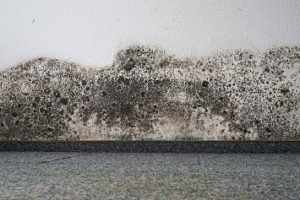The rainfall along the Gulf coast during Hurricane Harvey was so historic that the National Weather Service had to update the color charts on its graphics in order to map it. The previous color scale topped out at rainfall greater than 15 inches (in.). The new chart adds two new colors, showing a maximum of greater than 30 in. As the waters recede and the cleanup continues—the Federal Emergency Management Agency (FEMA) anticipates that recovery will take years—it’s time for anyone affected by the storm to brush up on mold, including where it grows, how it affects indoor air quality, and what you can do about it.
Respiratory Effects of Mold
Whenever water invades indoor environments, mold follows. According to the Centers for Disease Control and Prevention (CDC), molds produce allergens and irritants, and exposure can lead to health effects that include:
- Allergies. Allergy symptoms include shortness of breath, wheezing, and cough. In people with existing allergies, these symptoms may be worsened. Damp, moldy environments may also cause individuals who were not allergic to develop allergies.
- Hypersensitivity pneumonitis. Sometimes mistaken for pneumonia, hypersensitivity pneumonitis (HP) is an immune reaction (similar to an allergy) to inhaled organic dust, like mold spores and bits of dried mold in the air. Symptoms include shortness of breath, cough, muscle aches, chills, fever, night sweats, fatigue, cough, and even weight loss. Long-term exposure can cause scarring and permanent lung damage. Bird breeder’s lung and mushroom picker’s disease are both forms of HP.
- Asthma. In individuals with asthma, when the lungs are exposed to an irritant, the airways become inflamed and narrowed. As many as 15% of asthma cases may have been caused or worsened by workplace exposures.
- Mold infections in the lungs. Individuals with chronic lung diseases, like chronic obstructive pulmonary disease, are susceptible to mold infections in their lungs.
To protect workers, you must recognize conditions that can lead to mold growth and act fast to prevent mold from taking root in your workplace.
Dark and Damp Spaces
Many mold species do not need oxygen or light, meaning that they can be found in places you wouldn’t expect to find something growing, like inside walls and underneath carpet. It just needs moisture and something organic to eat. And a problem that you can’t see can be hard to identify—especially since mold spores are everywhere. All a mold spore needs is to land in a damp spot; it doesn’t matter to the mold whether the moisture came from a burst pipe, a flash flood, an overflowed toilet, or a tank of clean drinking water.
Once it has found a nice, damp place, mold grows fast. Within 48 to 72 hours, you can go from no mold problem to a serious mold problem. That’s why it’s so essential to clean up and dry out flood-damaged drywall and carpet quickly. If an area has been damp for more than 48 hours, you may need a mold inspector to identify the extent of your problem and determine what can or cannot be saved.
Tomorrow we’ll look at what you can do to prevent mold and mold-related problems in your workplace.

